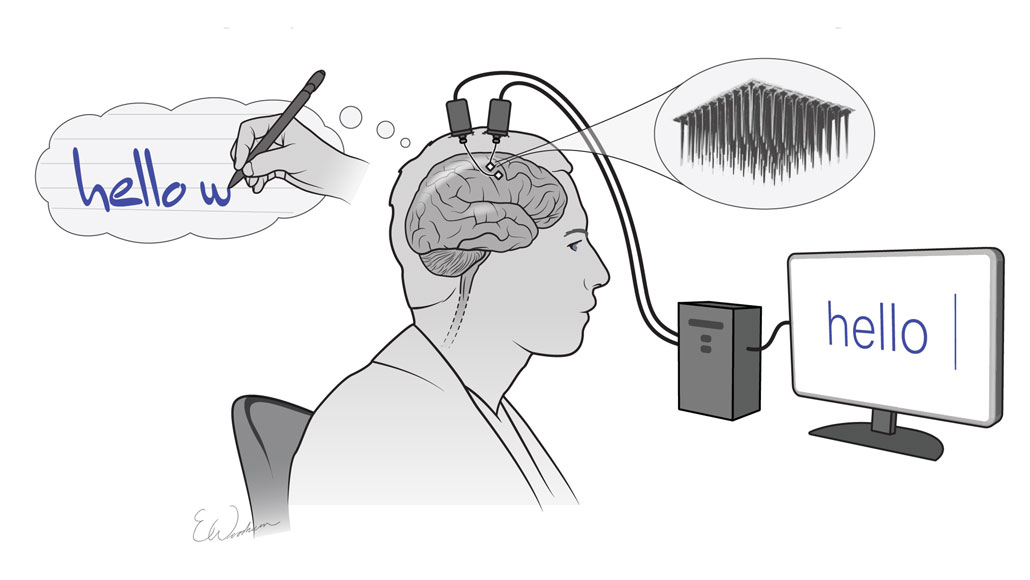Brain implants turn imagined handwriting into text on a screen
A person paralyzed from the neck down communicated using the brain-to-text technology

A man with electrodes implanted in his brain imagined writing with a pen on paper and saw that text appear on screen, a new study reports.
F. Willett et al/Nature 2021, Erika Woodrum